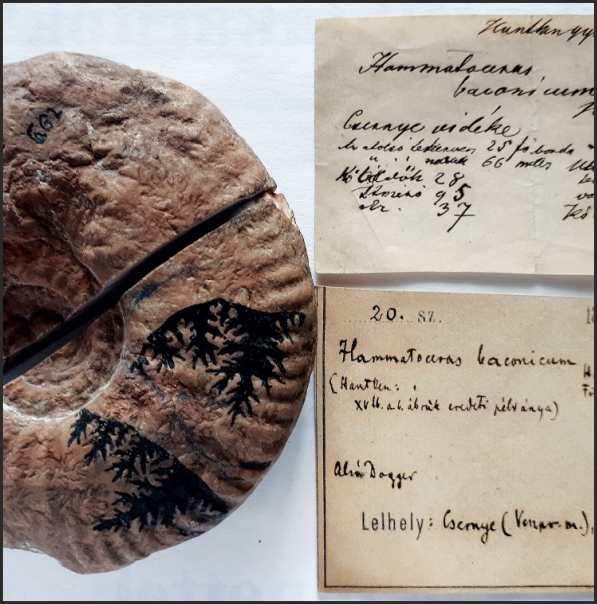Miksa (Maximilian) Hantken and the beginnings of Jurassic ammonite studies in Hungary
Abstract
Miksa (Maximilian) Hantken (1821-1893) was the first director of the Hungarian (Royal) Geological Institute (1869-1882), and the founder professor of the Palaeontological Institute at the University of Budapest (1882-1893). He started his geological activity with the average scientific background of the contemporaneous geologists. His knowledge rooted in long family tradition in coal prospecting and mining, and was based on studies at the Mining Academy of Selmecbánya (now Banska Štiavnica, Slovakia). In the beginning his paleontological knowledge was basic, but he shortly became interested in micropaleontology, mainly of Tertiary foraminifers, small and larger alike. During his field work he regularly visited the mountainous areas on the margins of the basins with brown coal deposits, in those times his main interest. In the Transdanubian Bakony Mountains and Gerecse Hills he thoroughly investigated the Jurassic and Cretaceous rocks, and started to amass his ammonite collections. Initially he needed some expert advice, thus he gave his first Jurassic ammonites from Bakonycsernye to U. Schloenbach of the Reichsanstalt in Vienna. Schloenbach presented and published a list of his determinations, including Ammonites Hantkeni sp. nov. He identified the Middle Lias and, based on some poorly preserved specimens, the Upper Jurassic Tithonian.
Hantken, in later visits to the locality, collected further material, altogether several hundred specimens, and decided to publish a monograph. In his preliminary paper – the one and only article he ever published on ammonites – he corrected Schloenbach’s age determination. He recognised that the ammonites formerly regarded as of Tithonian, came from beds with an exceptionally rich basal Middle Jurassic assemblage. He ordered 25 lithographic plates to be prepared with illustrations of the ammonites, he made measurements, notes, descriptions, comparisons, and gave names to new forms. Regretfully, his hard load of university duties, and then his untimely death caused his work remaining unfinished.
Nevertheless, the rich collections of Hantken could have served as bases for later, significant works. His Bakonycsernye ammonites were monographed by Gyula (Julius) Prinz in 1904, and with an enlarged, new collection were completely revised in the monumental, two-volume monograph of Barnabás Géczy (1966-67). Hantken’s Gerecse-collections served the basis of some shorter papers by Prinz, and his several hundred ammonites from Villány were worked out in the famous Callovian monograph of Lóczy jun. in 1915.
At the Hantken-founded Palaeontological Department of the Eötvös L. University his lagacy is alive. Papers on Jurassic ammonites and microfossils from Bakonycsernye are appearing in numbers even recently.
















